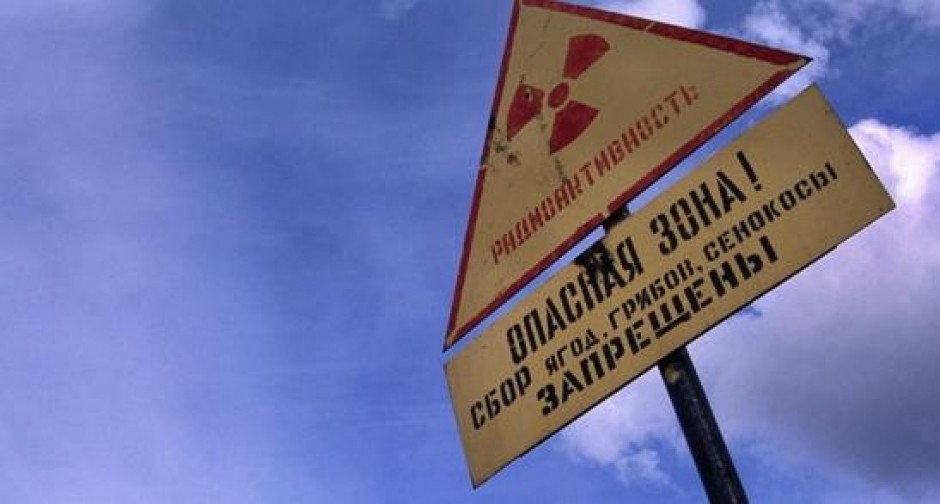
New Managing Director for Bellona Norway
The Board of the Bellona Foundation has appointed former Minister of Climate and the Environment Sveinung Rotevatn as Managing Director of Bellona No...
News

Publish date: November 21, 2017
News
Russia’s meteorological service said on Tuesday it had measured pollution by a radioactive isotope at nearly 1,000 times normal levels in the Ural Mountains, the first confirmation by officials there that an accident could have taken place.
The data corroborated conclusions reached by France’s nuclear regulator, which reported 11 days ago that a cloud of radioactive pollution detected over Europe likely came from an accident that could have taken place in Russia or Kazakhstan during the last week of September.
Russia’s state nuclear corporation Rosatom had said that the release of the radioactive material, known as ruthenium 106, was natural background radiation, the RIA Novosti news wire reported at the time.
But the Russian state weather service, known as Rosgidromet, released a statement saying it had found “extremely high pollution” of ruthenium 106 in two samples from meteorological stations in the southern Ural Mountains in late September and early October.
 The Mayak Chemical Combine.
Credit: po-mayak.ru
The Mayak Chemical Combine.
Credit: po-mayak.ru
One if these stations, in the village of Agrayash, measured levels that were 986 times those of the previous month. At another, in Novogorny, officials measured levels that were 440 times higher than the previous month.
Rosgidromet added that it was possible the radioactive isotope could have been absorbed into the atmosphere and reached Europe. It further said that the release had posed no threat to human health and had measured under legal norms.
The service further reported that ruthenium levels had been higher in Romania and Ukraine around the time the higher than normal levels were detected.
Nevertheless, Agrayash is located 30 kilometers from the Mayak Chemical Combine, a sprawling site for reprocessing nuclear fuel and producing radioactive material for industrial and research purposes, owned and operated by Rosatom. The facility produces half of the radioactive isotopes that Russia exports.
Mayak is also the site, in 1957, of the world’s third worst nuclear disaster, topped only by Chernobyl and Fukushima. In 2004, it was discovered that Mayak was dumping radioactive waste into the nearby Techa River. Russian regulators insist the practice has stopped, but many environmental groups have challenged that.
Mayak denied in a statement that it was the source of the increased ruthenium 106 levels, adding that it has not conducted any work on extracting the isotope “for several years.” Rosatom was also quoted by Russia’s RIA news agency as saying there were no accidents at any of its facilities that could increase the level of ruthenium 106 in the atmosphere.
One source at Mayak, however, acknowledged to Znak.ru, an independent news site, that the ruthenium could have come from nuclear waste brought there for reprocessing.
Still, Nils Bøhmer, Bellona’s general manager and nuclear physicist said there were reasons Mayak might not be the source of the release.
“The release could have come from Mayak, but it’s complicated by the fact that, along with the release of ruthenium, we would expect to see other isotopes as well,” said Bøhmer.
France’s IRSN – the technical arm the French nuclear regulator ASN – first reported the cloud of ruthenium on November 9, saying that a release of similar magnitude on its territory would have triggered evacuations and other civil defense responses. Bellona is not aware of any such emergency measures taking place in Russia over the past several weeks.
Because of the release’s magnitude, Bøhmer called on Rosatom to conduct a full inquiry and release the results internationally.
As of Tuesday, however, the confusion over the release’s origin’s continued to mount, aided by those who cast it as a tool of industrial rivalry.
Yevgeny Savchenko, the Chelyabinsk region public safety minister, said it was suspicious that it had been the French who initially confirmed the existence of the ruthenium 106 cloud. France, he said is “where there is a nuclear waste processing facility that competes with our Mayak.”

The Board of the Bellona Foundation has appointed former Minister of Climate and the Environment Sveinung Rotevatn as Managing Director of Bellona No...

Økokrim, Norway’s authority for investigating and prosecuting economic and environmental crime, has imposed a record fine on Equinor following a comp...

Our op-ed originally appeared in The Moscow Times. For more than three decades, Russia has been burdened with the remains of the Soviet ...

The United Nation’s COP30 global climate negotiations in Belém, Brazil ended this weekend with a watered-down resolution that failed to halt deforest...